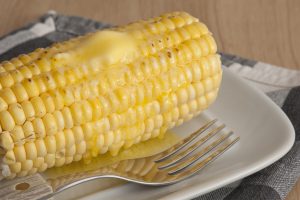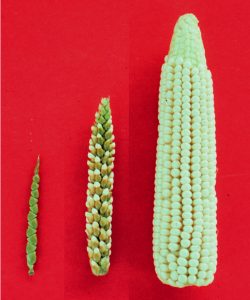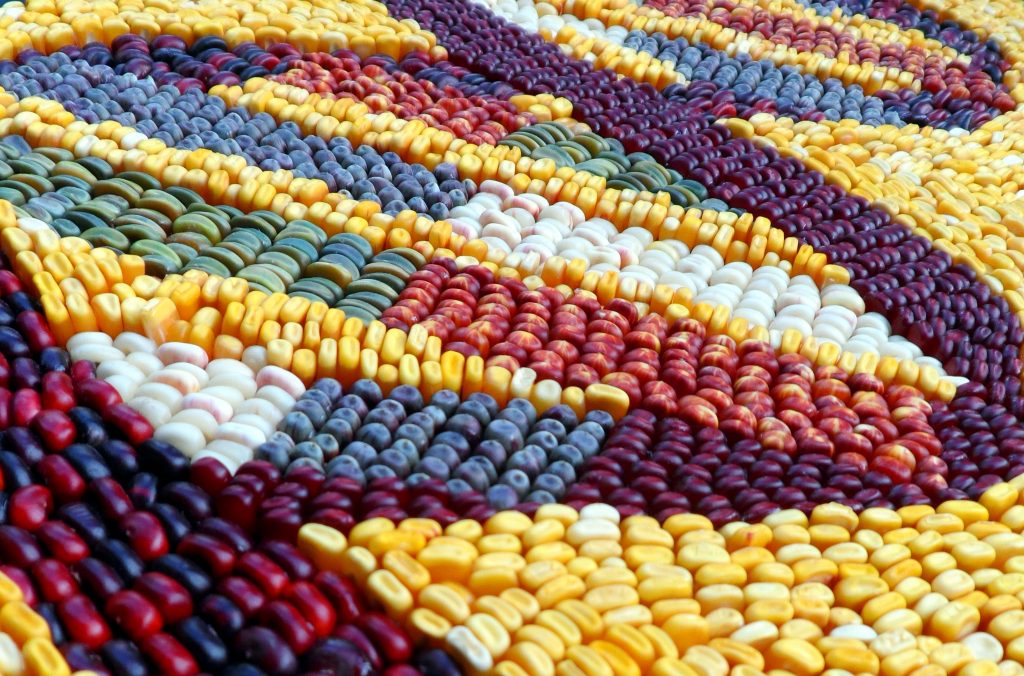As we munch on fresh sweet corn during summer cookouts, it may be easy to imagine that the Native Americans also enjoyed the butter-dipped goodness that is corn-on-the-cob, or maize, as it was originally called. After all, corn is New World plant that was an important food source, commodity, and spiritual item for the people of North, Central and South America. But what we may fail to realize is that corn as we know it today did not exist in ancient times. In fact, it wouldn’t exist at all if it weren’t for Native American farmers acting as proto-geneticists who used cross-breeding and selective-breeding to modify the genetic makeup of corn, creating a viable food crop from the nearly inedible Teosinte plant (Zea mays).

Corn growing today is so distant from Teosinte that, for years, botanist failed to recognize the connection between the two. Rather, it was thought that modern-day corn was derived from a now-extinct ancestor of the maize plant. It is easy to understand why when we look at the Teosinte plant. Teosinte appears more like rice than corn. Nine to seven thousand years ago, Teosinte, a wild grass plant, produced kernels that were much smaller and more sparsely spaced, not at all like the tightly adjacent kernels on today’s cobs. The seeds of this original plant were sheathed in hard, dense shells placed in a few rows on a spike growing from the plant’s stalk. Modern corn, however, produces cobs that are completely encased in husks and, thus, cannot reproduce naturally. It needs human intervention to propagate.
The earliest known domesticated corn grains, dating to -9000 BP, were discovered in the Rio Balsas Valley of Guerrero. Geneticists believe that the Native Americans utilized special selective breeding and cultivation techniques to very purposefully transform the Teosinte plant into a more useful crop, by methodically and scientifically collecting the seeds of the plants that were most suitable for consumption and cross breeding and cultivating them to develop cobs, or ears. The first cobs were most likely very short, only a few inches long with just eight rows of kernels. Over the next thousand years, the length of the cob increased, as did the amount of kernels. The ears of corn at your backyard cookout are most likely between seven and nine inches long with, on average, about 800 kernels per ear.

Two theories have been put forth by scientists to explain how the domestication of corn may have happened. One theory posits that corn is a genetic mutation of Teosinte that occurred in Guatemala. The other theory states that corn developed as a hybrid of Teosinte and early domesticated maize. Because they are so dissimilar, no one considered that Teosinte and corn to be related for hundreds of years. Detective work conducted by biologists, botanists and geneticists finally uncovered the link between Teosinte and present-day corn. In the 1930s, a graduate student from Cornell University named George Beadle was able to determine that both plants share similar chromosome make-up. He drew the conclusion that corn and Teosinte are members of the same species with corn being the domesticated version of Teosinte. For his work in genetics, Beadle went on to earn the Nobel Prize in 1958.
Maize spread throughout Central America along trade routes that extended into South America and United States. Archeological research has shown that maize was well-established in the southwestern region of the United States by 3,200 years ago, and had made it into Canada a few thousand years later. Corn became a vital part of Native American culture. It helped with the establishment of an agrarian lifestyle and aided in the domestication of livestock animals. It was used as currency, as well as a food source, and helped establish trade between tribal regions. Folklore and art included corn. Today, corn is so tightly woven into the fabric of life in Central America, as well as North America, that it is difficult to grasp that this important crop was deliberately genetically engineered by early Native Americans.
Sources:
Carroll, Sean B. “Tracking the Ancestry of Corn 9,000 Years.” The New York Times. 24 May 2010. Web. 1 July 2017.
“Corn: In the Beginning.” The Story of Corn – History Detective. Silos & Smokestacks National Heritage Area. June 2009. Web. 1 July 2017.
Hirst, K. Kris. “Maize: A 10,000 Year Old Radical Experiment in Plant Domestication.” The Domestication of Maize – History of American Corn. Thought Co. 30 Dec 2016. Web. 1 July 2017.
Lewis Tanya. “Here’s What Fruits And Vegetables Looked Like Before We Domesticated Them.” Science Alert. Business Insider, 31 Jan 2016. Web. 1 July 2017.
